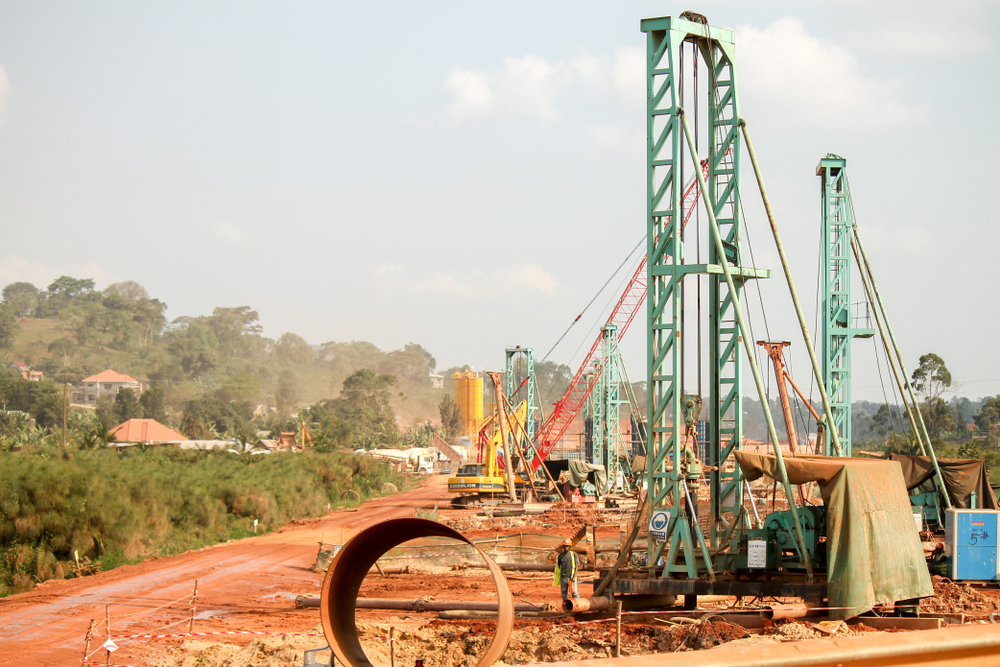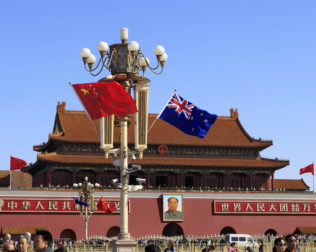By Shanthi Kalathil
Through means subtle and strategic, China has reshaped the arena of development assistance. Beijing has emerged as an alternative source of infrastructure financing and become an institutional player through its Asian Infrastructure Investment Bank (AIIB) and New Development Bank (NDB or, as it is often called, the BRICS bank). These advances are entwined in China’s Belt and Road Initiative (BRI)—a vast infrastructure, trade, and investment effort that has attracted the participation of more than seventy countries since its 2013 launch.
China frames its engagement with the developing world as one of “noninterference,” a riposte to what Beijing sees as the ideologically driven Western donor model promoting democratic governance and human rights. China’s government has been using the BRI to push the notion that economic growth without political liberalization or accountability is not only possible, but advantageous.
Departing from the practice of longstanding donors, China has promulgated an expansive definition of development assistance to include not simply grants and concessional lending, but commercial loans and investments as well. Based on this definition, the Chinese government can argue that much BRI-related activity, such as investment and trade, should count as development.
If the institutions driving the development conversation ignore or even undermine liberal-democratic values and concerns, however, the global durability of democratic governance can suffer, corruption can flourish, and authoritarianism can find fertile ground.
Beijing’s emergence as a development player has come even while the mainstream development community has placed increasing (if uneven) emphasis on good governance as a driver of positive development outcomes. Over the years, scholars and policy makers have converged on what initially seemed a somewhat radical idea: Good governance is good for development, helping to create the resilience, feedback loops, and capacity for self-adjustment that encourage social and economic progress. As donors increasingly observe developing countries opting for Chinese aid—accompanied by what appear to be fewer strings attached—this good-governance emphasis has grown more precarious.
Why does China’s rise as a development funder matter to the state of democracy around the world? When foreign assistance becomes part of broader conversations between and within developing countries, the effect can be to strengthen such core features of democratic governance as citizen voice and participation, media independence, transparency, and accountability. If the institutions driving the development conversation ignore or even undermine liberal-democratic values and concerns, however, the global durability of democratic governance can suffer, corruption can flourish, and authoritarianism can find fertile ground.
The Keys to Influence
Beijing wields its influence several ways, including participating in the existing organizations and arenas of global development; establishing its own institutions and initiatives; and shaping projects on the ground.
China has leveraged its increased influence in mainstream development institutions to steer the development conversation away from areas that it finds politically problematic. During the 2014 drafting of the UN Sustainable Development Goals, for example, China pushed to ensure the adopted goals excluded media independence and freedoms of association and speech.
China has also moved to establish its own institutional architecture in the development-assistance realm. The combined weight of the AIIB, the BRICS bank, and the BRI rivals that of the established multilateral development banks.
The AIIB, with more than eighty approved members (the United States and Japan are conspicuously absent), has been lauded as a Chinese diplomatic success. But it is the BRI that represents China’s most ambitious agenda. Initially conceived as an infrastructure network, it has become a kind of operating system for Xi’s vision of an interconnected, China-centric order positioned as an alternative to the existing rules-based international system.
Apart from working through existing development institutions and crafting new ones, China shapes the practice of development through its projects on the ground, notable for their lack of basic good governance principles such as transparency and accountability.
Yet the BRI has not been an unalloyed success. In countries where projects have soured, the BRI’s blending of development work with China’s geopolitical aims has raised doubt and opposition. In December 2017, for example, Sri Lanka handed its strategically located deepwater port at Hambantota to China on a 99-year lease, an effort by Colombo to pare down its more than US$8 billion in Chinese debt. The exchange has raised alarm that this “debt-trap diplomacy” will set a precedent for other indebted countries to sign over strategic assets or territory.
Apart from working through existing development institutions and crafting new ones, China shapes the practice of development through its projects on the ground, notable for their lack of basic good governance principles such as transparency and accountability. Moreover, when working with developing countries on media issues, Beijing de-emphasizes accepted journalistic norms in favor of cultivating favorable relations and coverage. Meanwhile, planned BRI projects that incorporate Chinese surveillance innovations may provide a chilling glimpse into how “technical assistance” packaged under the broad rubric of development can enable authoritarian practices.
A Development Community of Common Destiny?
As the BRI increasingly shapes the world’s conversation on foreign assistance, a collision between mainstream development and China’s authoritarian system seems inevitable. The mainstream development world, for years hamstrung by having to talk around politics and power, seems especially ill equipped to address the link between China’s authoritarian system at home and its vision of a “community of common destiny” abroad. Yet the nature of China’s increasingly authoritarian system conditions the lessons that it can learn from its own development—and thus the approaches that it can take throughout the world. Those who assume that there can be some separation between China’s internal political system and its external approach to development fail to take this into account.
This judgment may appear harsh to development practitioners, but yesterday’s Party is not today’s Party. China under Xi Jinping is both more authoritarian and more global, while the liberal international order is in disarray. This will affect development assistance in enduring ways—the question is not if, but when.
This post is based on the article, “China in Xi’s ‘New Era’: Redefining Development” that appears in the April 2018 issue of the Journal of Democracy.
Shanthi Kalathil is director of the International Forum for Democratic Studies at the National Endowment for Democracy. Follow her on Twitter @shanthikalathil.
The views expressed in this post represent the opinions and analysis of the author and do not necessarily reflect those of the National Endowment for Democracy or its staff.
Image Credit: Robin Nieuwenkamp/Shutterstock







Comments
Corrosive Capital in Central Asia: Perpetuating Poor Governance – Power 3.0: Understanding Modern Authoritarian Influence
November 13, 2018
[…] poor transparency in public procurement, and lack of consultation with local populations have followed BRI investments in other parts of the […]
Democracy Research News July 2018 – NATIONAL ENDOWMENT FOR DEMOCRACY
July 23, 2018
[…] International Forum for Democratic Studies’ Power 3.0 blog recently published a post on “How Beijing Is Reshaping the Infrastructure of Development” that examines how Beijing has emerged as an alternative source of infrastructure financing and […]
“China in Xi’s New Era”: International Forum for Democratic Studies June 2018 Newsletter – NATIONAL ENDOWMENT FOR DEMOCRACY
June 13, 2018
[…] “How Beijing is Reshaping the Infrastructure of Development” by Shanthi Kalathil. […]
The 16+1 Initiative: China’s Divisive Equation for Central and Eastern Europe – Power 3.0: Understanding Modern Authoritarian Influence
June 5, 2018
[…] state capitalism, which combines select market mechanisms with overall control by the party-state. BRI and 16+1 are political projects aimed at shaping the economy (and by extension, the politics) of […]